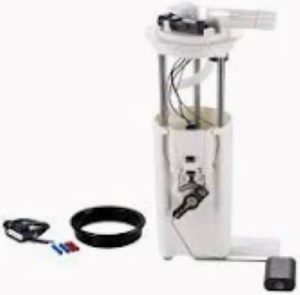A fuel pump check involves testing pressure, electrical connections and sound The gauges that are used for seeing how the gas pump is working, known as Fuel Pressure Gauge which indirectly monitor this by measuring all of the pressure mounts within a system. Gasoline engines need about 30-80 psi (pounds per square inch) of fuel in the feed lines, but other engine types may require a different pressure setting. The standard psi range for most automotive systems is posted on the lower side of that 30-70psi notification and if a reading falls below the recommended level, an immediate look atthe troubled pump or blocked fuel line should be necessary.
The next thing you should focus on is to check the electrical connections. In general, the electric pump needs a steady voltage supply to operate correctly; usually (depending on model) 12-14 volts. Technicians can measure the voltage at the fuel pump connector using a multimeter. Readings of less than 12 volts could signal an issue with the pump itself or with a related component; this, however, is best detected by using a multimeter. According to the industries of automotive repair, voltage imbalances are responsible for as much as 15% percent of fuel pump failures making a clear case how significant it is that an electric connection be consistent with frequent adjustments.
The pump noise tells you whether the pump is still doing its job or not. When you turn the ignition to “on” a good fuel pump will be slightly audible making a low humming sound as it primes. No sound could mean the pump is not being powered or an overly noisy part might suggest mechanical wear, impingement. Noise is a common warning sign, and in fact sound -- before the pump completely fails -- can foreshadow up to 30% of early fuel pump failures according to a survey among auto repair professionals conducted by Tu.

It also performs a Pump Testing by testing fuel flow rate. Part of this involves disconnecting the fuel line and measuring how much output there is over a fixed period, usually 750 milliliters in about half a minute for most cars. A weak flow indicates that the pump is worn or defective which will not deliver enough gas needed by the engine hence excellent damage on performance. In studies of fuel systems, a good pump is one that maintains an even flow rate with any deviations being no more than 10%, if the rate is off further then it's often because some wear or clogs have found their way inside.
Utilizing these approaches routinely of screening might help provide an energy Pump that is in excellent effective operating issue, as well as offer it added life years. Pressure readings, voltage stability, sound diagnostics and flow rate tests are all part of a comprehensive testing regimen that help in diagnosing Fuel Pump problems, crucial for maintaining vehicle reliability.